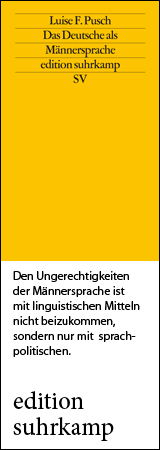
Wikimedia Commons
born December 3, 1897 in Limerick, Ireland
died August 13, 1974 in Faversham, England
Irish novelist and playwright
50th anniversary of her death on August 13, 2024
Biography • Quotes • Literature & Sources
Biography
“Kate O'Brien is a pioneer. She is the first writer of Irish fiction to represent fully and meticulously the Catholic upper-middle class. And her innovation goes further. She is also the first ... to introduce into Irish literature questions of female autonomy, self-definition and sexual freedom.” (Dalsimer.1990.p.xi)
In the 1930s and 1940s, Irish author Kate O'Brien was a well-known and successful writer whose works were also translated into German. Her first play, Distinguished Villa (1926), was a success in London, and her first novel, the Irish family saga Without My Cloak (1931), won her two major literary prizes and public acclaim. Over 50,000 copies were sold in the first few months alone. Her best-known work, That Lady (1946), chronicles the passionate struggle for an independent life of Ana de Mendoza, the Princess of Eboli, in the Spain of Philip II, a country rife with intrigue. First adapted for the London stage it later ran on Broadway and was made into a movie in 1955 with Olivia de Haviland in the leading role.
During her lifetime, Kate O'Brien ensured that the public knew little about her turbulent private life - with the exception of her childhood. Born in Limerick in 1897 as the seventh of nine children into a wealthy Irish-Catholic bourgeois family, she was educated by French nuns at Laurel Hill Convent boarding school in Limerick together with her older sisters after the early death of her mother in 1903. She had already learned Gaelic at school and was interested in the Irish struggle for independence.
After graduating from University College Dublin with a B.A. in English and French, she left her home country and began a nomadic life. Like James Joyce, to whom she has been compared, she spent most of her life in self-imposed exile - mainly in England, but also in the USA and Italy.
In 1922, she worked for a year as a governess in Bilbao, Spain, a country that fascinated her and to which she would return again and again. In her political travelogue Farewell Spain from 1937, she criticized Franco and sided with the Popular Front in the Civil War. This led to an entry ban, which was only lifted 20 years later following the intervention of the Irish ambassador.
In between, she kept visiting Ireland, where she owned a house in Roundstone, County Galway, between 1950 and 1960. She loved a good whiskey and was a generous hostess to a large circle of artists, friends and family.
For a long time, the best way to find out what preoccupied Kate O'Brien was to turn to her work. In many of her elegantly written novels in the style of psychological realism, the author first nostalgically and later increasingly critically examines the lifestyle of the wealthy Irish Catholic bourgeoisie, Irish nationalism and Catholicism. Time and again, her books deal with romantic love, life as an artist, home and exile.
The sensitive portrayal of female figures is a distinguishing feature of her work. O'Brien describes the struggle of women between family tradition and independence, between the experience of intense sexual feelings and a Catholic sense of sin.
The novel The Land of Spices (1941) was banned in Ireland because of one line hinting at homosexual love, as was Mary Lavelle (1936), which depicted an adulturous relationship. For O'Brien, this not only meant the loss of income and recognition in her home country, she also was concerned about her devoutly Catholic family - two of her aunts being nuns.
Her last two novels, The Flower of May (1953) and the lesbian Bildungsroman As Music and Splendour (1958) about two young Irish opera singers in Italy around 1890, focus on love relationships between women.
After that she turned to non-fiction, publishing the childhood memoir Presentation Parlour (1963) and writing a column for the Irish Times.
Her later books did not sell well and the author spent her last years in difficult financial circumstances and poor health in England, near Canterbury.
Kate O'Brien was only rediscovered a few years after her death in 1974. Her books were reissued by Virago, the feminist publisher, as well as by the Irish publishers Arlen House and by Penguin. After her papers were made available at the University of Limerick, a new critical biography by Eibhear Walshe was published in 2006 with many details about her private life and her lesbian relationships. Following a brief marriage to the homosexual Dutch journalist Gustaaf Renier in 1923, she lived with Margaret 'Stephie' Stephens for several years. The artist Mary O'Neill, her lifelong friend and heir to her estate, is also said to have been a lover.
At the same time, there was also a lively academic reappraisal of her work. Feminist literary scholars re-read her novels, highlighting their significance for Irish literature as well as for women's literature. In more recent studies her life and work have been discussed from a queer perspective.
Since 1984, her hometown of Limerick has organized an annual literary festival in honor of Kate O'Brien and the new Museum of Literature Ireland (MoLI) in Dublin opened with a special exhibition featuring her work. Today, 50 years after her death, she is regarded as one of the major Irish writers of the 20th century.
(Text from 1996, expanded and updated in 2024)
Author: Gabriele Koch
Quotes
One of this century's great novelists, (Kate O'Brien's) fiction broke new ground in Irish writing.
The Bloomsbury Guide to Women's Literature
All her novels, however, tell a single tale: one writers struggle to flee the forces that would crush her gifts and impede her self-expression.
Adele M Dalsimer. 1990. Kate O'Brien: A Critical Study. p. xvi.
As “Music and Splendour” is distinctive in its straightforward chronicling of a lesbian relationship.(...) Kate O'Brien normalizes same-sex love by presenting it with the equal portions of objectivity and sensitivity that infuse her presentation of heterosexual love.”
Ibid. p. 114
Literature & Sources
Blain, Virginia, Patricia Clements & Isobel Grundy. 1990. The Feminist Companion to Literature in English: Women Writers from the Middle Ages to the Present. New Haven. Yale UP.
Buck, Claire. Hg. 1992. The Bloomsbury Guide to Women's Literature. New York etc. Prentice Hall.
Contemporary Authors: A Bio-Bibliographical guide to current authors and their works. Vol. 1-4, first revision. 1967. Detroit, MI. Gale Research Co.
Dalsimer, Adele M. 1990. Kate O'Brien: A Critical Study. Boston. Twayne.
O’Brien, Kathy Rose. 2020. “Kate O’Brien’s Irish Times columns from 50 years ago are still so relevant”. Irish Times. 24 Januar 2020. https://www.irishtimes.com/culture/books/kate-o-brien-s-irish-times-columns-from-50-years-ago-are-still-so-relevant-1.4150014. (27.7.2024)
Reynolds, Lorna. 1987. Kate O'Brien: A Literary Portrait. Irish Literary Studies. Gerrards Cross. Colin Smythe.
Reynolds, Lorna & Bridget Hourican. 2009. “O'Brien, Kate” in Dictionary of Irish Biography. https://doi.org/10.3318/dib.006479.v1. (17.7.2024).
Reynolds, Paige. 2018. “The banned Irish feminist writer who took on De Valera: Literary activist and writer Kate O’Brien tackled feminist and queer concerns”. Irish Times. 14.06.2018. https://www.irishtimes.com/culture/books/the-banned-irish-feminist-writer-who-took-on-de-valera-1.3529346 (17.07.2024).
Walshe, Eibhear. 2006. Kate O'Brien: A Writing Life. Dublin; Portland, OR. Irish Academic Press.
If you hold the rights to one or more of the images on this page and object to its/their appearance here, please contact Fembio.



